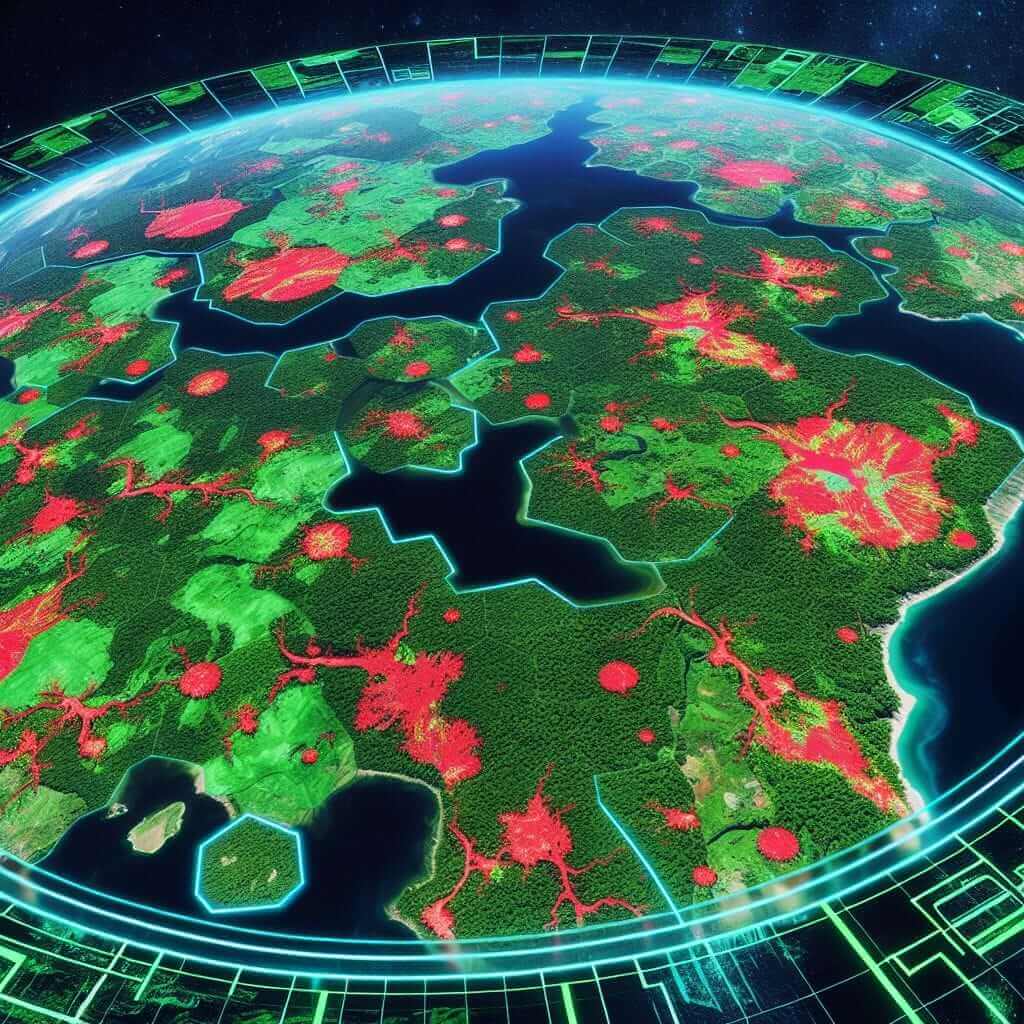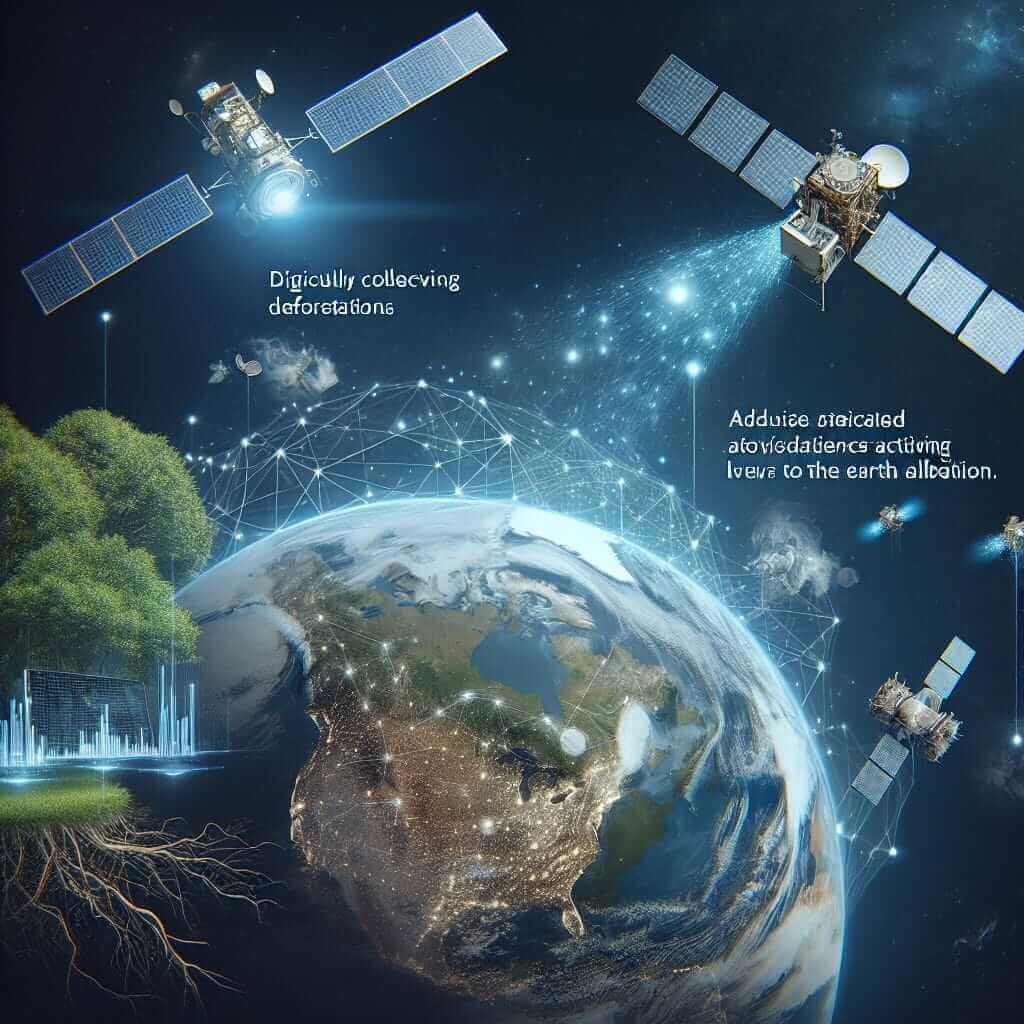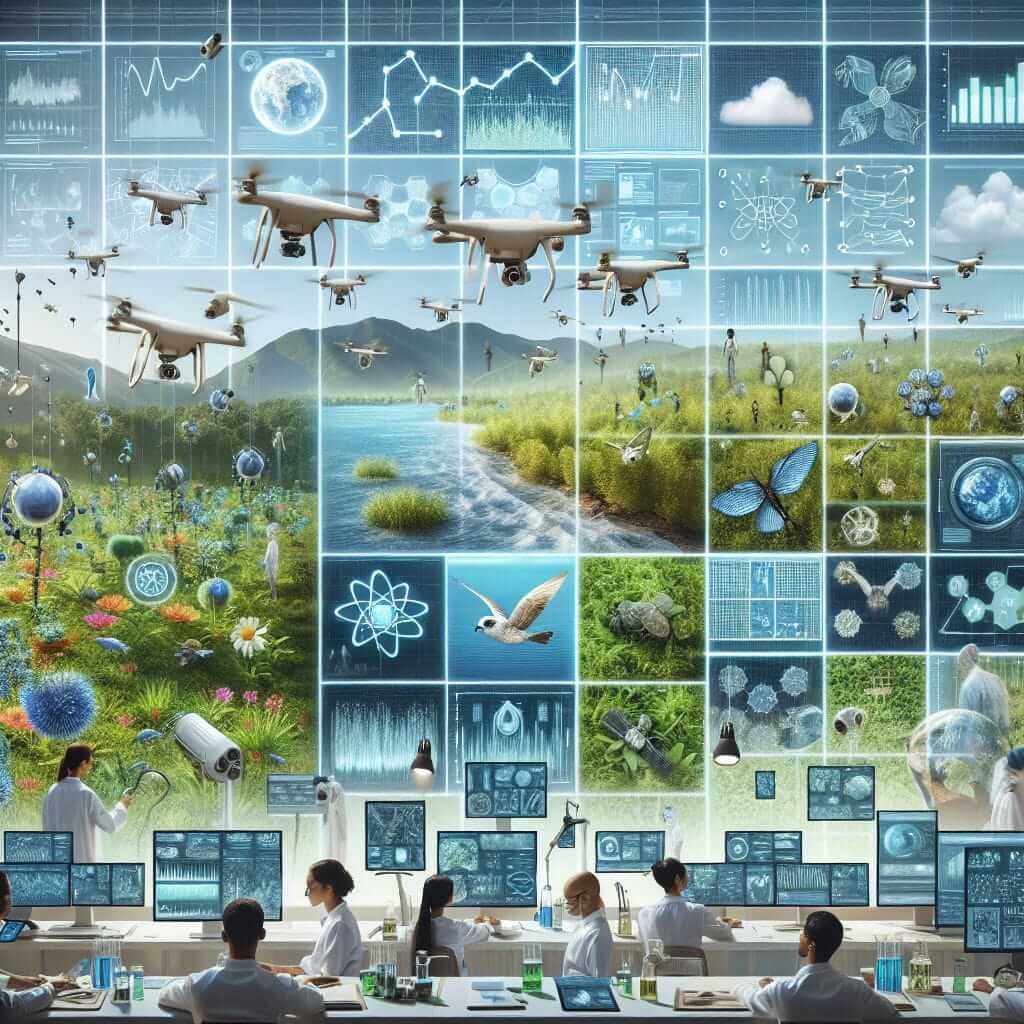The Reading component of the IELTS exam can be quite challenging, but with proper preparation, you can significantly improve your chances of scoring high. This post will provide a detailed Reading practice, focusing on the topic “How is AI being used in environmental conservation?” This subject has been gaining traction in the IELTS exam scene due to its relevance and significance in today’s rapidly evolving technological and ecological landscapes. By practicing with such topics, you prepare yourself for similar themes that could appear in future exams.
Table Of Contents
- Full IELTS Reading Practice Test
- Text for Practice: Medium Text
- How is AI Being Used in Environmental Conservation?
- Questions
- Multiple Choice
- True/False/Not Given
- Sentence Completion
- Answer Key and Explanations
- Multiple Choice
- True/False/Not Given
- Sentence Completion
- Common Mistakes in IELTS Reading
- Vocabulary
- Grammar Structure Highlight
- Tips for High IELTS Reading Scores
Full IELTS Reading Practice Test
Text for Practice: Medium Text
How is AI Being Used in Environmental Conservation?
Artificial Intelligence (AI) is increasingly being integrated into various sectors, including environmental conservation, to address the mounting challenges faced by our planet. AI offers innovative tools and solutions that aid in monitoring, preserving, and restoring the natural environment. This integration is especially crucial as the world contends with climate change, habitat destruction, and the rapid decline of biodiversity.
One of the significant ways AI is utilized is through satellite imagery and remote sensing. These technologies enable detailed monitoring of land use, deforestation, and changes in large ecosystems. By employing machine learning algorithms, vast amounts of data from satellites can be analyzed to detect patterns and changes that would be virtually impossible for humans to notice. For instance, Global Forest Watch uses AI to provide realtime data on forest cover changes, a critical tool in combating illegal logging activities.
 Deforestation Monitoring
Deforestation Monitoring
AI also plays a vital role in wildlife conservation. Machine learning models are deployed to analyze data collected from camera traps and audio sensors in natural habitats. These models help identify and track various species, providing essential information on animal population and movement patterns. In Africa, AI-powered drones are being used to monitor elephant herds and detect poachers in national parks, significantly reducing the incidents of illegal hunting.
Furthermore, AI has been instrumental in aquatic conservation efforts. Advanced algorithms are used to predict the impacts of climate change on marine environments, helping to formulate strategies for the protection of coral reefs and other vital marine ecosystems. For example, the partnership between environmental organizations and tech companies has led to the creation of AI models that can track and predict the health of coral reefs, which are crucial for marine biodiversity.
In addition to monitoring and data analysis, AI aids in optimizing resource management. Smart irrigation systems powered by AI provide precise water applications based on soil moisture levels and weather forecasts, leading to significant water savings in agriculture. This not only conserves water but also helps in maintaining soil health and reducing the need for chemical fertilizers.
AI’s potential in environmental conservation is immense, but it is not without challenges. Data privacy concerns, the need for substantial computational resources, and the ethical implications of AI deployment in surveillance are some issues that need to be addressed. As AI continues to evolve, its role in environmental conservation will likely expand, offering even more sophisticated tools to protect our planet.
Questions
Multiple Choice
-
What is the primary application of AI in environmental conservation as mentioned in the text?
- a) Monitoring climate change
- b) Enhancing agricultural productivity
- c) Analyzing satellite imagery and remote sensing data
- d) Developing new energy sources
-
How does AI contribute to wildlife conservation?
- a) By reducing the need for camera traps
- b) Through AI-powered drones for monitoring and detecting poachers
- c) Using satellite imagery to track animal movements
- d) Developing new habitats for wildlife
-
Which of the following is an example of AI’s role in aquatic conservation?
- a) Tracking and predicting the health of coral reefs
- b) Monitoring freshwater bodies for pollution
- c) Enhancing fish farming techniques using AI
- d) Developing AI-powered boats to clean oceans
True/False/Not Given
- AI algorithms can analyze satellite data to detect illegal logging activities.
- AI has proven ineffective in reducing poaching incidents in Africa.
- AI-powered smart irrigation systems are used to reduce the need for chemical fertilizers.
Sentence Completion
- AI is used to provide precise water applications in __.
- __ models help in identifying and tracking various species in natural habitats.
- The collaboration between environmental organizations and tech companies has assisted in the creation of AI models for __.
Answer Key and Explanations
Multiple Choice
-
c) Analyzing satellite imagery and remote sensing data
- Explanation: The text highlights the significance of AI in analyzing satellite imagery and remote sensing data for monitoring land use, deforestation, and changes in ecosystems.
-
b) Through AI-powered drones for monitoring and detecting poachers
- Explanation: The passage mentions that AI-powered drones are used to monitor elephant herds and detect poachers in national parks.
-
a) Tracking and predicting the health of coral reefs
- Explanation: AI models are used to track and predict the health of coral reefs, which are essential for marine biodiversity.
True/False/Not Given
-
True
- AI algorithms are indeed used to analyze satellite data to detect illegal logging activities, as stated in the example of Global Forest Watch.
-
False
- The text suggests that AI-powered drones have significantly reduced poaching incidents in Africa, indicating effectiveness.
-
Not Given
- The text does not provide information on the ineffectiveness of AI in reducing poaching incidents.
Sentence Completion
-
agriculture
- AI-powered smart irrigation systems are used to provide precise water applications in agriculture.
-
Machine learning
- Machine learning models are used to identify and track various species in natural habitats.
-
coral reefs
- Collaboration between environmental organizations and tech companies has led to the creation of AI models for tracking and predicting the health of coral reefs.
Common Mistakes in IELTS Reading
- Misinterpreting Questions: One of the most frequent errors is not thoroughly understanding what the question asks. Make sure to read each question carefully and underline or highlight keywords.
- Time Management: Spending too much time on one question can be detrimental. Practice skimming and scanning techniques to quickly locate answers.
- Neglecting Synonyms: Often, the words in the questions will differ from those in the text. Enhancing your vocabulary and recognizing synonyms can greatly aid in identifying correct answers.
Vocabulary
- Deforestation (noun) /ˌdiː.fɔːr.ˈeɪ.ʃən/: The clearing of trees, transforming a forest into cleared land.
- Ecosystem (noun) /ˈiː.kəʊˌsɪs.təm/: A biological community of interacting organisms and their physical environment.
- Biodiversity (noun) /ˌbaɪ.oʊ.daɪˈvɝː.sə.ti/: The variety and variability of life on Earth.
- Algorithm (noun) /ˈæl.ɡə.rɪ.ðəm/: A process or set of rules to be followed in calculations or other problem-solving operations.
Grammar Structure Highlight
- Present Continuous for Ongoing Actions: “AI is increasingly being integrated into various sectors,” demonstrates the use of present continuous to show an ongoing action.
- Passive Voice for Emphasis: “AI algorithms are used to analyze satellite data” utilizes passive voice to emphasize the action rather than the doer.
Tips for High IELTS Reading Scores
- Practice Regularly: Consistency is key. Regularly practicing reading passages and questions will build your familiarity with the test format and improve your speed and accuracy.
- Enhance Vocabulary: A strong vocabulary helps in quickly understanding passages and questions. Make a habit of learning new words daily.
- Develop Skimming and Scanning Skills: These techniques help in quickly locating information without reading every word.
By following these strategies and regularly practicing with relevant topics, you’ll be better prepared to tackle the Reading section of the IELTS with confidence.



